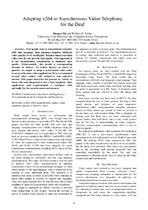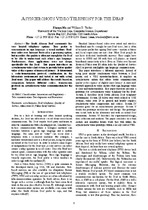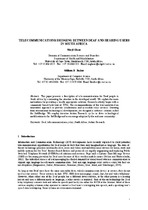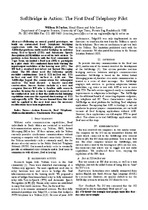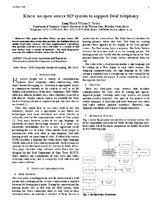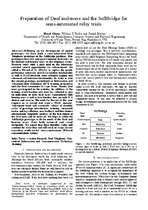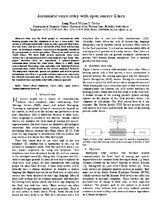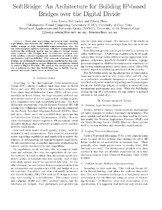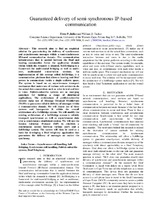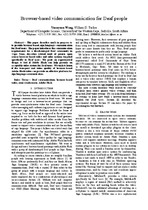Search
Now showing items 1-10 of 16
Adapting x264 to asynchronous video telephony for the Deaf
(Telkom, 2008)
Deaf people want to communicate remotely with sign language. Sign language requires sufficient video quality to be intelligible. Internet-based real-time video tools do not provide that quality. Our approach is to use ...
Asynchronous video telephony for the Deaf
(Telkom, 2007)
The South African Deaf community has very limited telephony options. They prefer to communicate in sign language, a visual medium. Realtime video over Internet Protocol is a promising option, but in reality, the quality ...
Telecommunications bridging between deaf and hearing users in South Africa
(2004)
This paper presents a description of telecommunications for Deaf people in South Africa by contrasting the situation in the developed world. We explain the main motivations for providing a locally appropriate solution. ...
SoftBridge in action: the first Deaf telephony pilot
(Telkom, 2003)
Following on several partial prototypes, we built an automated Deaf Telephony bridging application with the SoftBridge platform. The SoftBridge performs multi-modal bridging in real-time using Text-to-Speech (TTS) and ...
Kiara: an open source SIP system to support Deaf telephony
(Telkom, 2008)
This paper describes Kiara, an open source SIPbased communication system that provides the building blocks to enable Deaf relay services. We have implemented a prototype that provides real-time text, voice and video to a ...
Preparation of Deaf end-users and the softbridge for semi-automated relay trials
(Telkom, 2004)
Following on the development of several prototypes, we have built a semi-automated Deaf Telephony prototype on the SoftBridge platform. This prototype relays text and speech between Deaf users on the Internet and hearing ...
Automatic voice relay with open source Kiara
(Telkom, 2009)
One way for Deaf people to communicate with hearing people over the telephone is to use a voice relay. The service is often provided with a human relay operator that relays text into voice, and vice versa, on behalf of the ...
SoftBridge: an architecture for building IP-based bridges over the digital divide
(Telkom, 2002)
Users and computing equipment have varying capabilities that include the abilities to exchange text and audio, engage in high bandwidth communication, etc. As the technological options increase, e ective communication ...
Guaranteed delivery of semi-synchronous IP-based communication
(Telkom, 2004)
This research aims to find an empirical solution for guaranteeing the delivery of synchronous and asynchronous messages within a semi-synchronous IP-based communication domain. The communication infrastructure that is ...
Browser-based video communication for deaf people
(Telkom, 2009)
This paper describes work in progress to to provide browser-based sign language communication for deaf users. The paper introduces the communication requirements for a disadvantaged Deaf community in Cape Town, describes ...

